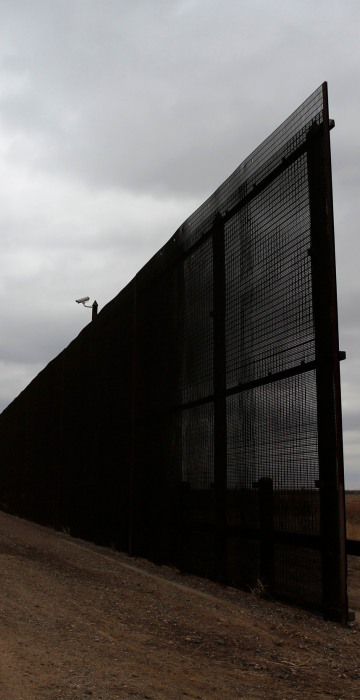
Photo
Here's What the U.S.-Mexico Border Looks Like Before Trump's Wall
Donald Trump plans to construct a border wall with Mexico to cut the number of illegal immigrants. This is how the border looks now.

A gap in the U.S.-Mexico border fence is pictured in El Paso, Texas, Jan. 17, 2017.
The great wall on the U.S.-Mexico border that President Donald Trump promised on the campaign trail took a big step closer to becoming reality when he signed two executive orders aimed at curbing illegal immigration on Jan. 25.
The executive actions include redirecting existing Homeland Security money to erect what the administration described as a "very large" wall on the southern border with Mexico.

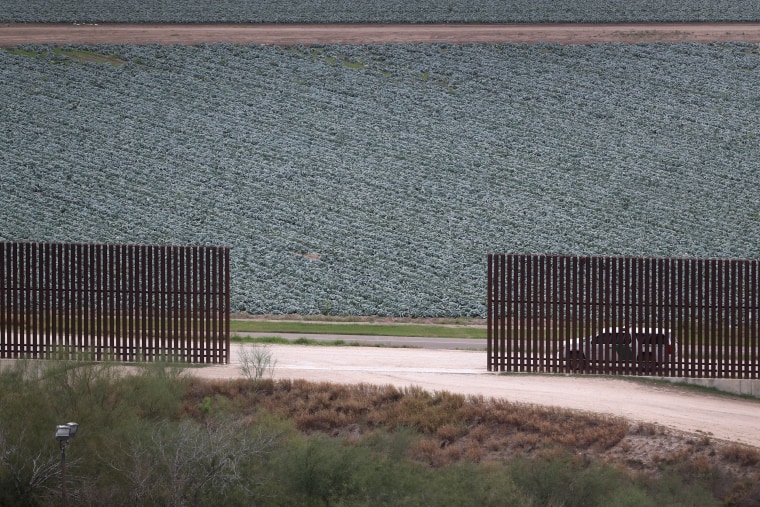
A U.S. Border Patrol vehicle sits at a fence opening near the U.S.-Mexico border near McAllen, Texas, on Jan. 5, 2017.
Trump's insistence that Mexico would pay for the wall was among his most popular proposals on the campaign trail, sparking enthusiastic cheers at his raucous rallies. Mexico has repeatedly said it will not pay for any border wall.
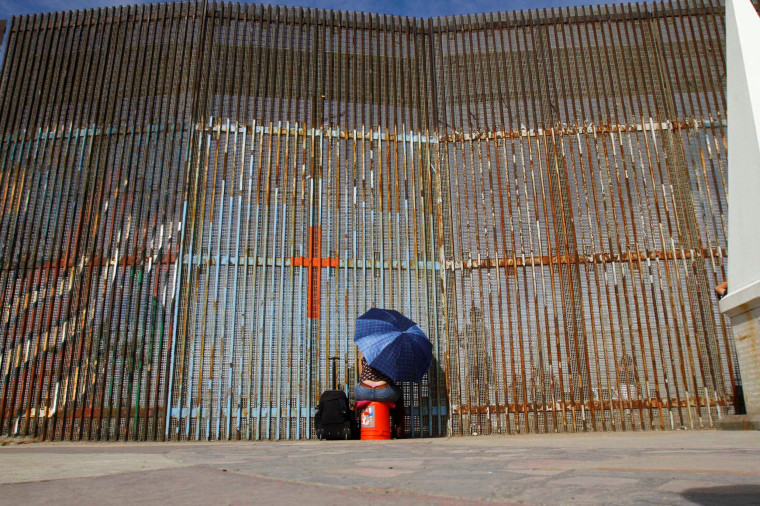
A woman talks to her relatives across a fence separating Mexico and the United States, in Tijuana, Mexico, Nov. 12, 2016.
In January, Trump said the building project would initially be paid for with a congressionally approved spending bill and Mexico would eventually reimburse the U.S., though he has not specified how he would guarantee payments.
Trump will meet with Mexican President Enrique Pena Nieto at the White House in late January.

A gap in the U.S.-Mexico border fence is seen outside Jacumba, California, on Oct. 7, 2016.
In claiming authority to build a wall, Trump may rely on a 2006 law that authorized several hundred miles of fencing along the 2,000-mile frontier. That bill led to the construction of about 700 miles of various kinds of fencing designed to block both vehicles and pedestrians.
The Secure Fence Act was signed by then-President George W. Bush and the majority of the fencing in Texas, New Mexico, Arizona and California was built before he left office. The last remnants were completed after President Barack Obama took office in 2009.

A U.S. Border Patrol agent looks into Mexico from the U.S.-Mexico border near Sonoita, Arizona, on Feb. 26, 2013.
The Trump administration must adhere to a decades-old border treaty with Mexico that limits where and how structures can be built along the border. The 1970 treaty requires that structures cannot disrupt the flow of the rivers, which define the U.S.-Mexican border along Texas and 24 miles in Arizona, according to The International Boundary and Water Commission, a joint U.S.-Mexican agency that administers the treaty.
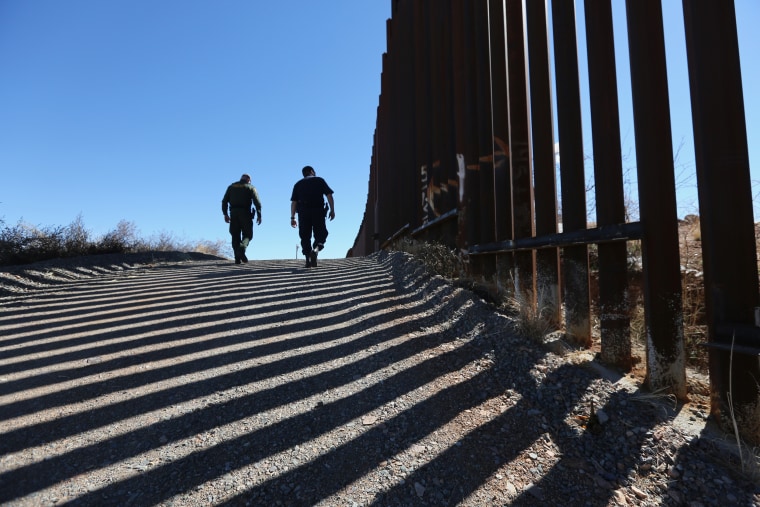
U.S. Customs and Border Protection personnel walk along a section of the recently-constructed fence at the U.S.-Mexico border in Nogales, Arizona, on Feb. 26, 2013.
The newest generation of fencing allows Border Patrol agents to see through the fence and is harder to scale from the Mexican side.
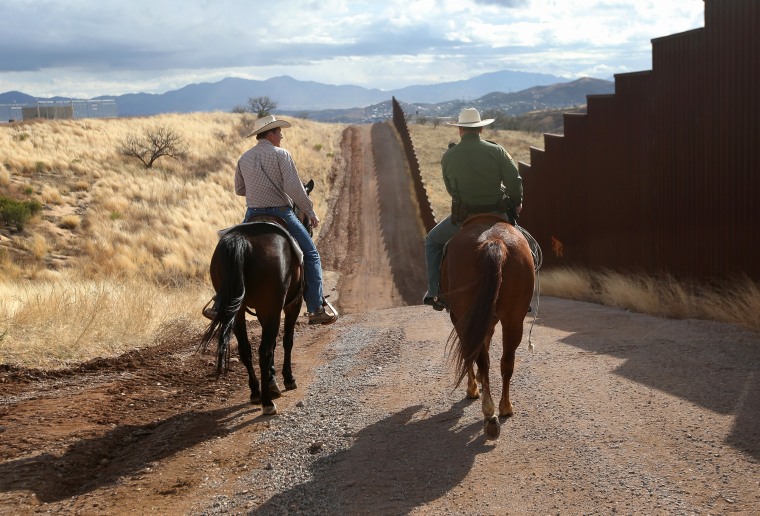
U.S. Border Patrol ranch liaison John "Cody" Jackson, right,rides with cattle rancher Dan Bell on Bell's ZZ Cattle Ranch at the U.S.-Mexico border in Nogales, Arizona, on March 8, 2013.
Jackson meets regularly with local ranchers to coordinate the agency's efforts on border issues, including drug smuggling and illegal immigration from Mexico. Bell, a third generation rancher, grazes cattle on nearly ten miles of border property.

Wooden crosses are placed on the border fence in memory of migrants who died crossing into the U.S., in Nogales, Mexico, on Nov. 10, 2016.
Other executive actions expected Wednesday include bolstering border patrol agents and ending what Republicans have argued is a catch-and-release system at the border. Currently, some immigrants caught crossing the border illegally are given notices to report back to immigration officials at a later date.
If Trump's actions would result in those caught being immediately jailed, the administration would have to grapple with how to pay for jail space to detain everyone and what to do with children caught crossing the border with their parents.
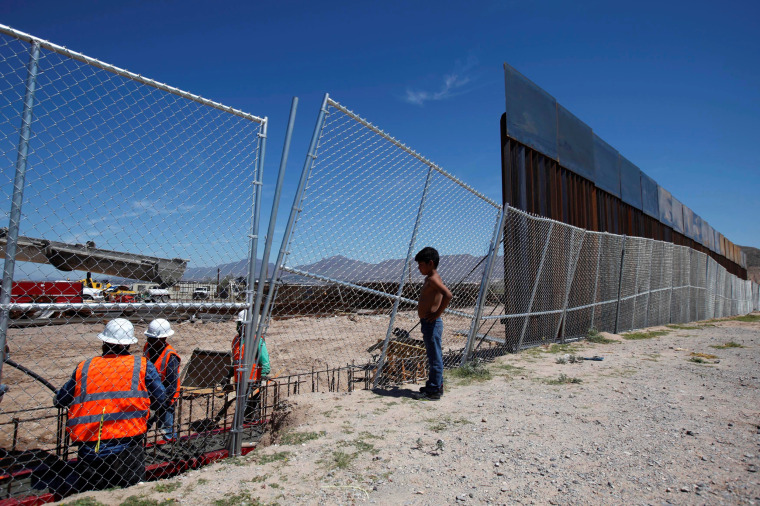

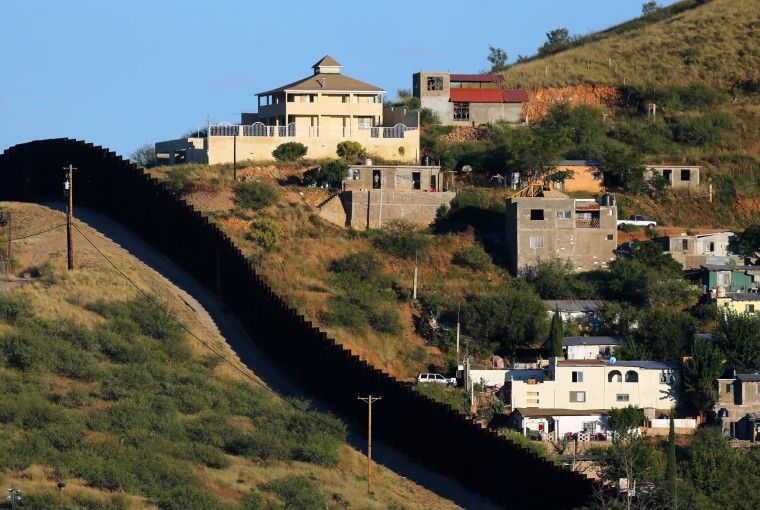

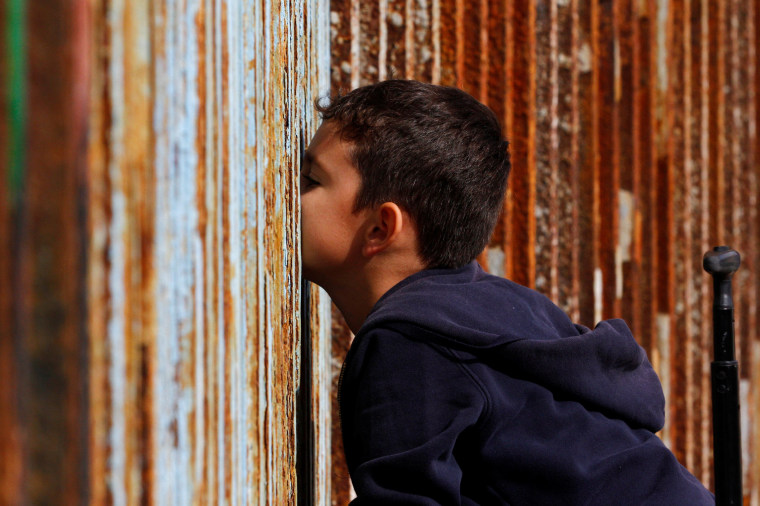

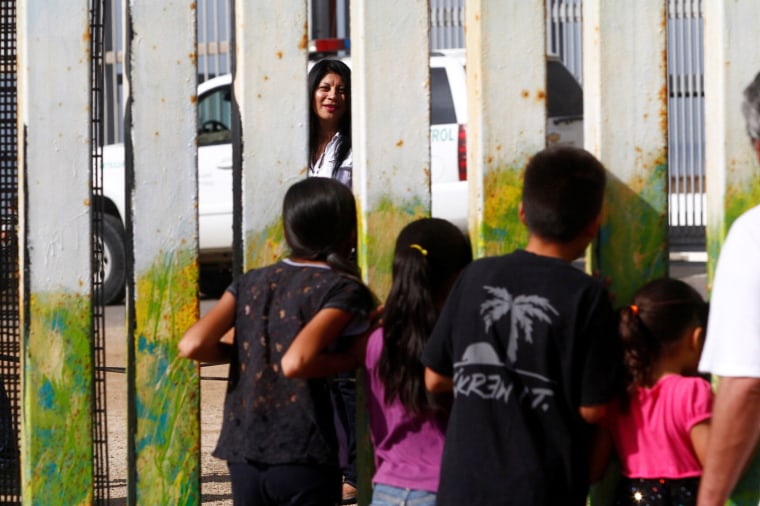
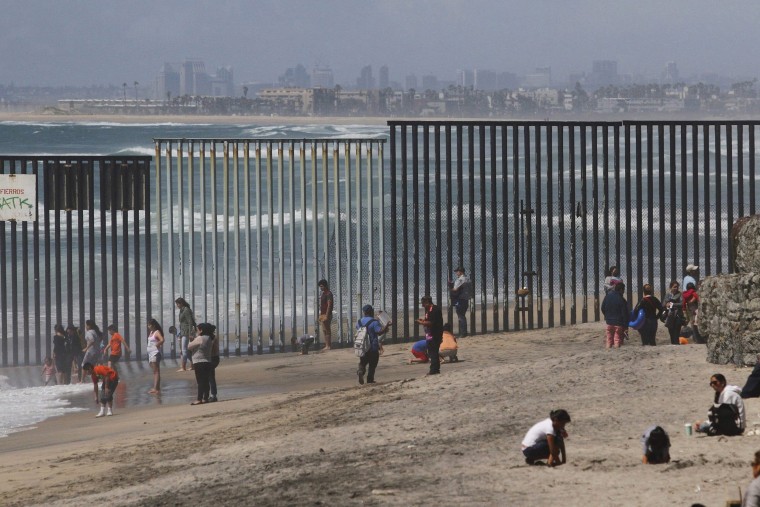
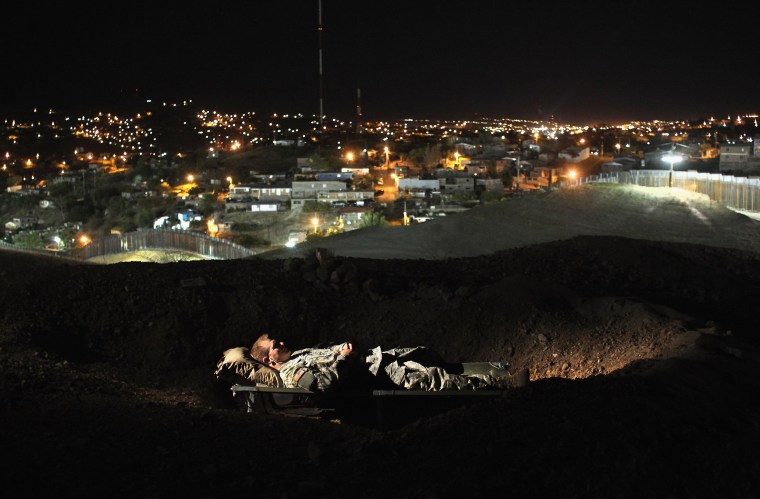
U.S. Army National Guardsman Pfc. Philip Moore rests during a "down time" shift overlooking the border fence with Mexico in Nogales, Arizona, on June 22, 2011.
Soldiers at observation posts in Nogales work 24 hour shifts, each taking turns resting for 4 hours during the night.

A fence separates the border towns of Nogales, Mexico, right, and Nogales, Arizona, on Oct. 9, 2016.